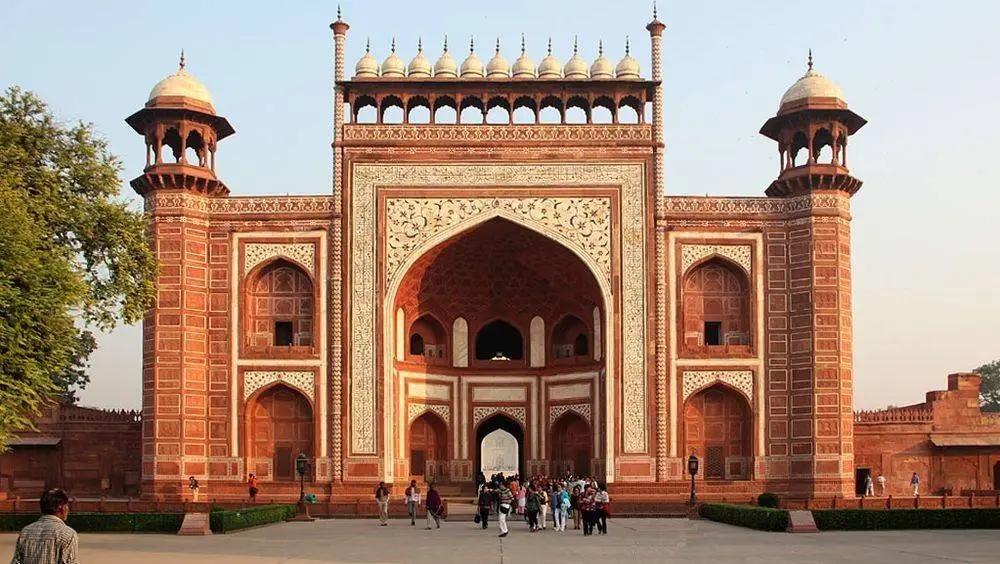Home / Inside the Taj Mahal: A First-Time Visitor’s Guide
Inside the Taj Mahal: A First-Time Visitor’s Guide

Image Source: Taj Mahal Official Website
The Taj Mahal ranks among the world’s most visited monuments and draws 7-8 million visitors annually to its pristine white marble beauty. This architectural masterpiece stands as the finest example of Mughal architecture and earned its place among the New 7 Wonders of the World in 2007.
Shah Jahan’s magnificent mausoleum complex stretches across 42 acres along Agra’s Yamuna River, with construction lasting from 1632 to 1653. The monument’s story captivates visitors – Shah Jahan built this grand tribute to honor his wife Mumtaz Mahal’s memory. He gathered 20,000 skilled artisans to create his vision, investing what would amount to $827 million in today’s terms.
My frequent travels to India’s historical sites have inspired me to create a complete guide that will help you plan your first visit to this UNESCO World Heritage site. You’ll discover the best times to view the monument and explore its marble chambers’ intricate details, making your Taj Mahal experience unforgettable.
Where is the Taj Mahal Located?
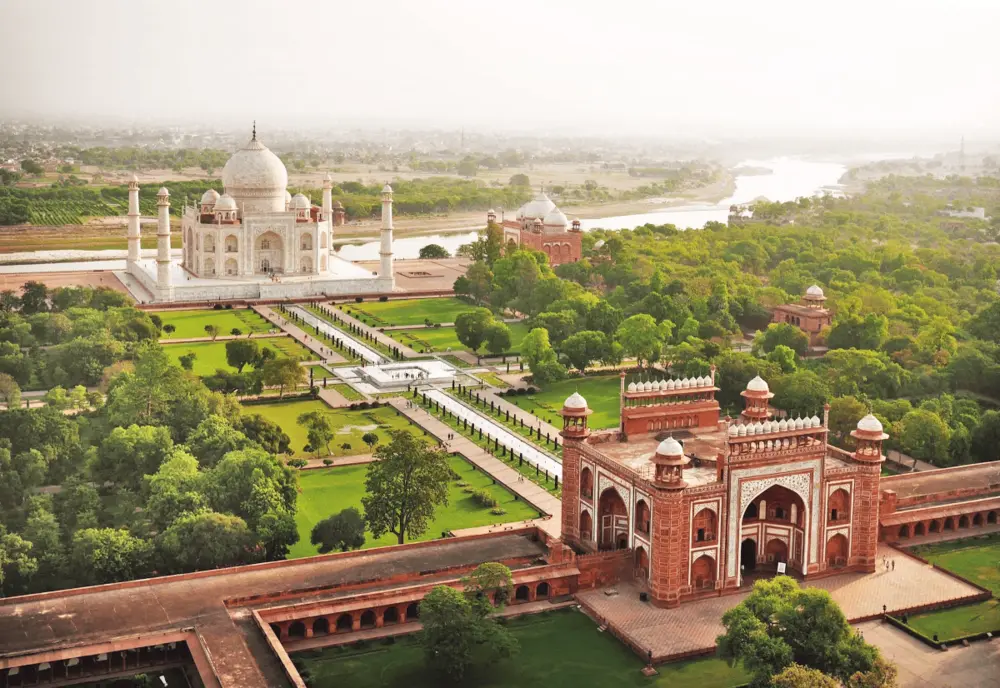
Image Source: Google Arts & Culture
The Taj Mahal stands proudly in northern India’s city of Agra, Uttar Pradesh state, approximately 200 kilometers south of New Delhi. This architectural masterpiece sits in a perfect spot that adds both practical value and timeless beauty to its surroundings.
Getting to Agra from major Indian cities
The city of the Taj welcomes visitors through several travel options. I’ve explored almost every possible route and each one gives you a unique glimpse of India’s landscape.
By Air: Flying saves the most time. Agra’s Kheria Airport lies just 7 kilometers from downtown [1]. Several airlines run regular flights, especially when tourist season peaks. You’ll reach the city center quickly from here.
By Rail: Trains give you the quickest way to reach Agra. The city connects well through three main stations:
- Agra Cantonment (main station)
- Raja-ki-Mandi
- Agra Fort
Delhi offers many luxury trains on this route like Palace on Wheels, Shatabdi, Rajdhani, and Taj Express. My top pick? The Gatimaan Express—India’s fastest train. It leaves Delhi’s Hazrat Nizamuddin station at 8:10 a.m. and pulls into Agra by 9:55 a.m. [2].
By Road: Agra sits right on India’s Golden Triangle tourist circuit (Delhi-Agra-Jaipur), making road travel easy. The city links to:
- Delhi and Varanasi through National Highway 2
- Jaipur through National Highway 11
- Gwalior through National Highway 3
- Delhi and Lucknow through expressways
Busses run often from Agra’s ISBT and Idgah bus stands to nearby cities [3]. A private taxi from Delhi costs around 6000 rupees (about 75 EUR) and fits up to four people.
Agra offers plenty of local transport—from auto-rickshaws and cycle rickshaws to prepaid taxis. Remember the Taj Mahal area allows only eco-friendly vehicles, so you’ll see battery-operated busses, horse-drawn tongas, and rickshaws nearby [4].
The Taj Mahal’s position along the Yamuna River
The Taj Mahal rises above the southern bank of the Yamuna River, which flows into the sacred Ganges [5]. Shah Jahan picked this spot downstream from Agra Fort, just past a sharp river bend.
The complex rests on a massive platform stretching 300 meters (980 ft) long and rising 8.7 meters (28.5 ft) above the riverbank [6]. This height keeps the building safe from floods and creates an impressive sight from many angles.
The Yamuna’s calm waters mirror the mausoleum perfectly, creating a magical “floating tomb” effect. Garden water channels, once fed by the river, make this view even more stunning.
The river helped build the Taj in many ways. It brought materials, workers, and visitors by boat. The riverbed provided sand and shingle used throughout the complex. Both Mumtaz Mahal and Shah Jahan made their final journey down these waters to their eternal home.
Mehtab Bagh (Moonlight Garden) lies across the river. The Archeological Survey of India believes it was part of the original design. This spot gives you what I think is the best photo opportunity of the Taj—a view most tourists miss but shouldn’t [7].
Historical records show the river’s path was changed to flow closer to the building. This shows how far Shah Jahan went to create his perfect monument to love.
Planning Your Visit to the Taj Mahal
You need good timing and preparation to make your Taj Mahal visit memorable. I’ve been to this magnificent monument several times and learned a lot about making the most of your time there. Here’s what you need to know to plan your 2025 visit.
Best time of year to visit
The right timing will make your Taj Mahal experience so much better. October to March is the best time to go. The weather stays pleasant enough to walk around the grounds comfortably, unlike India’s hot summer months.
October is great because the monsoon rains have cleared up and winter fog hasn’t set in yet. March is another sweet spot with decent temperatures and smaller crowds. My March visit was perfect – clear skies let me see the monument in all its glory [8].
The best way to enjoy your visit is to skip the brutal summer heat (April-June) and dodge the unpredictable monsoon season (July-September). The place is less crowded on weekdays than weekends, which gives you more space to take in the atmosphere [9].
Ideal time of day: Sunrise vs. sunset
People often debate whether sunrise or sunset gives you the better view. Both times have their own magic.
Sunrise visits come with these perks:
- The gates open 30 minutes before sunrise
- You’ll see fewer people in the early morning
- The soft morning light creates perfect photo opportunities
- The temperature stays cooler, which helps in warm months
- You have a better shot at that perfect, crowd-free photo [10]
My advice is to show up an hour before the gates open if you pick sunrise [11]. This early start really pays off – the place fills up fast within 10-15 minutes after opening [12].
Sunset visits have their own charm:
- The white marble glows with orange, red, and purple hues [13]
- The light creates beautiful reflections on the Yamuna River [14]
- The crowds start to thin out in late afternoon
On top of that, the Taj offers special night visits during full moon periods – two days before and after, making it five nights each month. These exclusive 30-minute tours only take 50 people per group [15].
One thing to remember: The Taj Mahal stays closed every Friday for prayers [16], so plan around this if you’re in Agra over a weekend.
2025 ticket prices and booking options
The 2025 prices vary based on where you’re from:
- Foreign Tourists: ₹1,200 (approximately USD 15)
- Indian Tourists: ₹50 (approximately USD 0.60) [17]
- SAARC and BIMSTEC Citizens: ₹540
- Children Under 15: Free entry whatever their nationality
You’ll need to pay ₹200 more to see the tombs inside the main mausoleum [18]. This extra ticket is worth it if it’s your first visit and you want the full experience.
You can buy tickets at:
- Western Gate (near Saheli Burj)
- Eastern Gate
- The official Archeological Survey of India website
Booking online is your best bet to avoid the lines [19]. The ticket windows open an hour before sunrise and close 45 minutes before sunset. Online tickets are cheaper and save you from standing in two lines – one for tickets and another to get in.
The site has separate lines for domestic and international visitors, which makes things run smoother than you might expect.
What to Expect at the Entrance
The Taj Mahal’s entrance gates feel more like a high-security zone than a historical monument. Your visit starts with this experience, and security measures protect this architectural treasure for future generations.
Security procedures
The Taj Mahal complex has airport-style security at its entrance. Every visitor must go through metal detectors, bag scanners, and physical searches. Male and female tourists need to line up in separate queues [20]. The process is well-laid-out but might take some time.
You’ll walk through metal detectors once you reach the security checkpoint (people with pacemakers get special consideration) [21]. Security staff then physically search visitors to keep prohibited items out. These detailed checks exist because the monument faces risks from pollution, vandalism, and possible terrorism.
These strict measures protect both visitors and the monument. Security personnel patrol the Taj Mahal area to keep visitors safe [22]. The Archeological Survey of India decided in 2017 that only 40,000 visitors can enter daily, and each person gets three hours inside [23].
What you can and cannot bring inside the Tajmahal
The Taj Mahal has a long list of things you can’t bring inside. Pack light to avoid issues. Here’s what you cannot bring:
- Food and drinks (except water)
- Tobacco products, cigarettes, and lighters
- Tripods, drone cameras, and camera stabilizers
- Electronic equipment (except cameras and phones)
- Mobile chargers and headphones
- Large bags and backpacks
- Books and newspapers
- Knives and other sharp objects [24]
Here’s what you can bring:
- Half-liter water bottle (free with foreign visitor tickets)
- Mobile phone (keep it on silent)
- Camera (no photos inside the main mausoleum)
- Wallet with essential items [25]
Clock rooms near entrance gates store your belongings if you bring prohibited items by mistake. Foreign visitors get free shoe covers with their tickets. You must wear these covers on marble platform areas to protect the surfaces [26][27].
Hiring an official guide vs. self-guided tour
Your choice between a guide and independent exploration depends on your priorities. Each option has its benefits.
Official guides give valuable insights about history, architecture, and cultural details you might miss otherwise. A guide will:
- Tell you about intricate design symbolism
- Help you move through crowds quickly
- Show you the best photo spots
- Keep aggressive vendors away [27]
Look for guides with identity cards at the monument or book through trusted travel agencies [28]. Guide rates vary, but expect to pay around 600 rupees (about $7 USD) per monument as of 2023.
Self-guided tours let you explore at your own speed. The official AudioCompass app offers audio guides in several languages including English, French, German, Italian, Spanish, and Japanese.
Information signs stand throughout the complex, but crowds make them hard to read during busy hours. Keep your entrance ticket safe – you’ll need it when you leave [29].
The sort of thing I love about guided tours is how they make the monument’s rich history and architectural details come alive through expert storytelling. In spite of that, you can have a great self-guided visit if you research beforehand and feel comfortable with crowds.
Walking Through the Great Gate of Tajmahal
Image Source: Wonders of the world
The Great Gate (Darwaza-i-rauza) of the Taj Mahal complex greets visitors after they clear security checks. This magnificent red sandstone structure stands 23 meters tall. The rectangular building acts as a gateway between two worlds and sets the stage for the wonder ahead.
First glimpse of the Taj Mahal
Magic happens the moment you walk through the Great Gate’s archway. The iconic white dome and minarets appear within the darkness of the entrance arch. They seem to float above the symmetrical gardens like a vision from a dream.
Shah Jahan’s architects planned this reveal with great care. They designed this first glimpse to captivate visitors’ senses. Many people describe it as an almost spiritual experience. The marble mausoleum emerges from the morning mist or afternoon haze. The archway’s dimensions frame its proportions perfectly.
Nobel laureate Rabindranath Tagore called the Taj Mahal a “tear-drop on the cheek of time.” These words strike a chord most powerfully during those brief moments when you first see it through the Great Gate’s portal.
The architect showed brilliance through this gradual reveal. The gate offers just a taste instead of showing everything at once. Many visitors pause here, often alone if they lag behind the crowds. Only their footsteps echo on the stone floor and break the sacred silence.
You should spend a few moments in this entrance hall. Take steps forward and back to see how the viewpoint changes. The Taj seems to alter in size and proportion. This spot provides one of the most photographed views of the monument, perfectly framed by the dark archway.
The symbolic meaning of the entrance
The Great Gate holds deep symbolism beyond its function. Mughal architecture sees this entrance as the threshold between earth and Paradise. The gardens beyond represent heaven, making the gate a spiritual passage from earthly life to the divine.
Meaning flows through every element of the gate. The perfect symmetry shows the Mughal love for balance and harmony. The red sandstone creates a deliberate contrast with the white marble mausoleum. This hierarchy of materials typified imperial Mughal architecture [30].
Beautiful calligraphy from the Quran’s 89th chapter, “The Dawn,” adorns the gate with all 30 verses. Abdul Haq, whom Emperor Shah Jahan named Amanat Khan, created this masterpiece. The letters grow larger as they rise higher on the gate. This clever design keeps the text readable from below despite increasing height.
The gate’s interior hall features an octagonal shape with four staircases leading upward. A decorated ceiling curves to a central point. This architectural rhythm continues throughout the complex.
My first walk through this gateway left a lasting impression. The gate frames both the physical structure and prepares your mind. You move from the busy outer courtyard (Jilaukhana) through this grand portal. This creates a moment to clear your thoughts before entering a space of extraordinary beauty.
Walking through the Great Gate today, you follow a path countless others have taken since the 17th century. The creators carefully designed this experience to inspire awe, reflection, and appreciation of perfect architectural harmony.
Exploring the Taj Mahal Gardens
The heart of the Taj Mahal complex lies beyond the Great Gate. The meticulously designed gardens serve as both frame and foundation for the white marble mausoleum. These gardens are not just ordinary spaces but a carefully conceived paradise on earth that appeals to all senses and prepares visitors for the architectural wonder ahead.
Layout and design of the Charbagh
The Taj Mahal gardens showcase the traditional Mughal “Charbagh” design—a Persian-inspired concept meaning “four gardens” that the emperors brought to India [31]. This geometric masterpiece splits the garden into a perfect square with four similar quadrants. These quadrants symbolize the four rivers of paradise described in Islamic texts [32].
Narrower cross-axial walkways subdivide each main quadrant into sixteen sub-quadrants. This creates a mesmerizing pattern from above [33]. A peripheral walkway with large pointed arches wraps around the garden. These arches support an elevated walk—elements borrowed from fortification architecture that add substance and character to the garden wall [34].
The four main walkways (khiyabans) meet at the garden’s center and guide visitors toward the mausoleum [35]. These pathways once had cypress trees, fruit trees, and flowering plants that symbolized life, death, and rebirth [36], an East India Company agent who visited in 1632-33, noted that these gardens had apple, orange, mulberry, coconut, and plantain trees. Beautiful roses, marigolds, poppies, and carnations also adorned the space.
Shah Jahan’s vision of paradise came to life through a densely planted and fragrant garden, unlike today’s lawn areas. The garden’s sweet scents created a multi-sensory experience.
The reflecting pools and fountains
A raised white marble platform (chabutra) with an ornamental pool stands at the walkways’ intersection. This pool features five fountains [37]. The central tank works as both a water feature and a profound symbol that represents the four rivers of paradise’s source [38].
The reflecting pool creates the Taj Mahal’s most iconic image—a perfect mirror reflection of the white mausoleum on water . Early morning visitors might notice the fountains switched off. This allows for perfect reflections in still water.
An ingenious mechanism powered the entire fountain system. Copper vessels connected through copper pipes to the main water supply [39]. The Yamuna River provided water through an aqueduct that reached the middle of the west wall [40]. These waterworks still exist outside the western wall, showing their original design [41]. The 9.47-meter (31 ft) wall created enough pressure drop to keep the fountains running and garden plots watered [42].
Best photo spots in the gardens
The gardens provide many spots to capture the Taj’s majesty. The central pathway with the reflecting pool in front creates the “classic shot” seen in countless postcards and magazines.
The central platform near the ornamental pool offers perfect symmetrical views. This spot works best early morning when still waters create mirror-like reflections. Here are some creative alternatives:
- The Char Bagh viewpoint looking down the fountains—but expect to wait in queues [43]
- The Mehman Khana’s (Guest House) gardens and trees provide natural frames [144]
- Small corridors with arches on either side offer unique viewpoints through natural frames [45]
Early morning visits reward photographers with fewer crowds and soft light that makes the marble glow beautifully [46]. The white marble transforms into warm orange, red, and purple hues during sunset visits [47].
Inside the Taj Mahal Mausoleum
The central mausoleum of the Taj Mahal reveals a stunning contrast between its simple exterior and rich interior world. The octagonal chamber creates a sacred atmosphere where whispers echo for a full 28 seconds. This acoustic feature lets prayers for Mumtaz linger in the air [48]. The filtered light slowly revealed the intimate space that stands as the emotional core of Shah Jahan’s tribute to love.
What to see in the main chamber
Black marble inlaid in white creates a beautiful geometrical floor pattern with octagonal stars and cruciform shapes [49]. The large dome above gives you a sense of reaching toward heaven. Soft light filters through detailed marble screens (jalis) that cast a gentle glow throughout. The layout follows perfect symmetry. Yet I found one touching detail – Shah Jahan’s cenotaph added later broke this perfect balance [50].
An exquisite perforated marble screen (mahjar-i mushabbak) surrounds the cenotaphs, installed in 1643 to replace its golden predecessor [51]. This octagonal screen mirrors the chamber’s shape. Each side has three marble frames filled with delicate plant-shaped jalis. These screens are unique as they’re the only ones in the Taj that show organic patterns instead of geometric designs [52].
The tomb of Mumtaz Mahal
Mumtaz Mahal’s central cenotaph sits at the hall’s center, with Shah Jahan’s larger cenotaph next to it [52]. These decorated marble structures serve as false tombs. The real graves lie in a simple crypt below, following Muslim customs that discourage elaborate grave decorations [53].
A single marble block shaped like a sarcophagus on a stepped platform forms each cenotaph [54]. A pen case symbol marks Shah Jahan’s tomb, identifying it as male [55]. Quranic inscriptions on Mumtaz’s cenotaph promise paradise and display Allah’s ninety-nine names in beautiful calligraphy [56].
Intricate marble inlay work
The parchin kari (pietra dura) work stands without doubt as the interior’s most stunning feature. Semi-precious stones embedded in marble create detailed patterns [57]. The interior showcases colorful floral motifs instead of Quranic verses found outside [58]. Single flower petals can contain up to sixty separate stone pieces, showing incredible craftsmanship [59].
Coral, malachite, carnelian, jasper, and lapis lazuli highlight India’s Mughal-era wealth. European influences appear in the natural flower designs – tulips with curved petals, daffodil-like blooms, and lilies with curved-back petals [60]. The craft lives on as descendants of the original 17th-century artisans work in shops just 300 feet from the Taj.
Visiting the Mosque and Guest House
The Taj Mahal’s white marble grandeur stands next to two similar red sandstone buildings that most visitors tend to miss. These symmetrical structures flank the mausoleum’s east and west sides. They showcase Shah Jahan’s architectural vision where balanced, complementary elements create a harmonious whole.
Purpose and design of the flanking buildings
The red sandstone buildings serve different purposes despite looking similar. The western structure works as an active mosque that faces Mecca. You’ll find a mihrab (prayer niche) here, along with black marble outlines marking spaces for 569 prayer mats [61]. The eastern building, called Mehman Khana (Guest House), exists to keep the complex perfectly symmetrical.
Beautiful red Sikri sandstone makes up both structures, complete with marble-necked domes and architraves. The architects considered this material contrast with the white marble mausoleum to create a visual hierarchy common in imperial Mughal architecture. The ornamentation in these buildings appears less refined and naturalistic than the mausoleum [62].
These spaces showcase practical elegance. The mosque still functions as a place of worship. The Mehman Khana’s history as a drawing room for guests shows how even ceremonial spaces served practical purposes [63].
Views from different angles
These flanking buildings offer some of the best viewpoints to learn about the Taj Mahal from new angles. The structures provide unique perspectives that rarely show up in typical photographs.
The mausoleum’s inlay work looks stunning from these vantage points. The mosque and guest house create natural frames that highlight various architectural elements. Sometimes, these views exclude the famous dome completely, offering a different visual experience [64].
These buildings aren’t just supporting characters in the Taj Mahal’s story. They play vital roles in the complex. The perfect harmony of the Taj Mahal complex would fall apart without them [65]. Each element contributes to creating this architectural masterpiece we know today.
Nearby Attractions Worth Visiting
The Taj Mahal is breathtaking, but Agra has so much more to offer. This city is full of hidden historical gems that tell amazing stories about India’s rich heritage.
Agra Fort and its connection to the Taj Mahal
The impressive Agra Fort stands just 2.5 kilometers northwest of the Taj Mahal. This UNESCO World Heritage Site is a massive red sandstone structure that served as the Mughal emperors’ main residence [66]. You can see the Taj Mahal beautifully from several spots inside the fort [67]. Emperor Akbar built this magnificent fort in 1565. Its grand halls, palaces, and fortified walls show the Mughal Empire’s might [68].
The fort’s grounds are huge. You’ll find architectural wonders like Diwan-i-Am (Hall of Public Audience), Jahangir Palace, and beautiful mosques such as Nagina Masjid and Mina Masjid [69]. The fort holds a sad story too – Shah Jahan, who built the Taj Mahal, spent his final years imprisoned here by his son Aurangzeb. He could only look at his masterpiece through the windows [69].
Other historical sites in Agra
Agra’s charm extends beyond these two monuments. The Tomb of Itimad-ud-Daulah, which people call “Baby Taj,” was Nur Jahan’s gift to her father. This beautiful mausoleum shows off intricate marble inlay work that later inspired the Taj Mahal’s design.
Mehtab Bagh (Moonlight Garden) sits across the Yamuna River and gives you a different look at the Taj. This peaceful garden is perfect to take photos or just sit quietly and take in the view. Akbar’s Tomb in Sikandra is another must-see. Built between 1605-1613, this architectural masterpiece houses the great emperor’s remains.
Where to eat after your visit
You’ll need good food after all that sightseeing. Agra’s food scene won’t disappoint. The city is known for its Mughlai cuisine and local treats like petha, a sweet made from ash gourd. Pinch of Spice serves amazing authentic North Indian and Mughlai food – their kebabs, curries, and biryanis are fantastic [70].
The Oberoi Amarvilas takes dining to another level with Taj Mahal views. Their restaurant Bellevue serves Italian, pan-Asian, and Indian dishes. Their bar is special – it’s the only one in the world where you can see the Taj Mahal while enjoying your drink. If you want tasty food that won’t break the bank, head to Mama Chicken Mama Franky House. Their chicken rolls and kebabs are local favorites [71].
Conclusion
The Taj Mahal never fails to remind me why people from all corners of the world come to see this architectural masterpiece. My repeated visits have shown me something new each time – from the first rays of sunlight touching the marble dome to the tiny details I keep finding in its walls.
The Taj Mahal complex gives visitors much more than photo opportunities. Shah Jahan’s tribute to love shows its deeper meaning through perfect symmetry, detailed craftsmanship, and thoughtful symbolism. The gardens, the delicate inlay work, and the quiet moments by the reflecting pools help visitors appreciate this wonder that has fascinated hearts for centuries.
Agra has much more to offer beyond its crown jewel. The city’s red sandstone fortifications, ornate tombs, and lively markets create a vivid picture of the Mughal era. These nearby attractions add depth to the Taj Mahal experience and help visitors grasp its historical context and cultural importance.
The Taj Mahal’s changing moods throughout the day still leave me spellbound after so many visits – from its ethereal dawn appearance to its golden sunset glow. This magnificent monument teaches us about architectural excellence, artistic dedication, and timeless beauty. The Taj Mahal’s lasting charm can inspire your trip through India’s rich cultural heritage.
Nemai
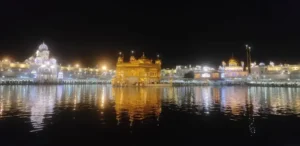
Amritsar Uncovered: A Soulful Journey Through History & Food
“Amritsar is not just a place, it’s a feeling.” This beautiful city in the state of
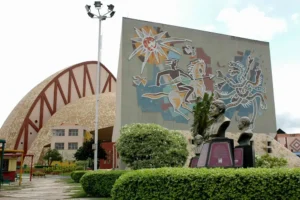
Science City Kolkata: Exploring the Wonders of Science and Innovation
Science City Kolkata, one of India’s most remarkable science museums, stands as a beacon of curiosity

Pahalgam: A Serene Escape into Kashmir’s Pristine Beauty
Tucked away in Kashmir Valley’s core, Pahalgam stands as a slice of heaven on our planet.
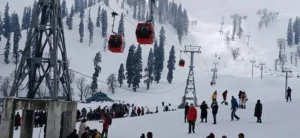
Gulmarg Gondola ticket booking:
If you’re planning a trip to Gulmarg, the Gulmarg Gondola ride is an absolute must-do! One

Srinagar, Kashmir – Heaven on Earth
Nestled in the lap of the Himalayas, Srinagar is the crown jewel of Kashmir. With its

Badrinath – Discover the Spiritual Majesty of the Himalayas
Badrinath is a town, situated in Chamoli district in the state of Uttarakhand, India. Badrinath is

The Real Beauty of Kashmir: A Photo Journey Beyond Paradise
Kashmir, known as “heaven on earth,” covers 225,000 square kilometers—making it bigger than 87 United Nations

Gir National Park Complete Guide | Only Home of Asiatic Lions
Gir National Park, also known as Sasan Gir, is one of India’s most iconic wildlife sanctuaries.
